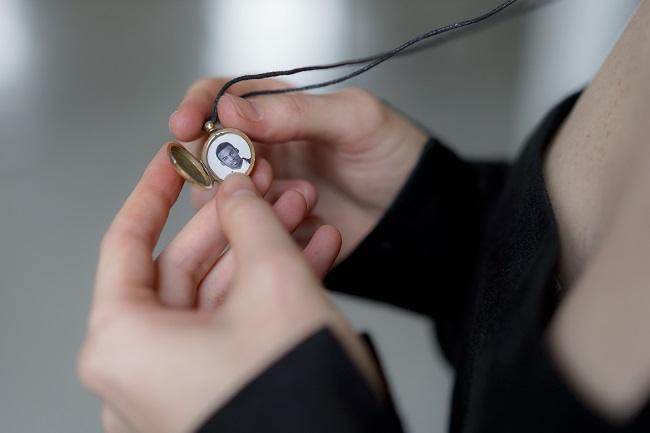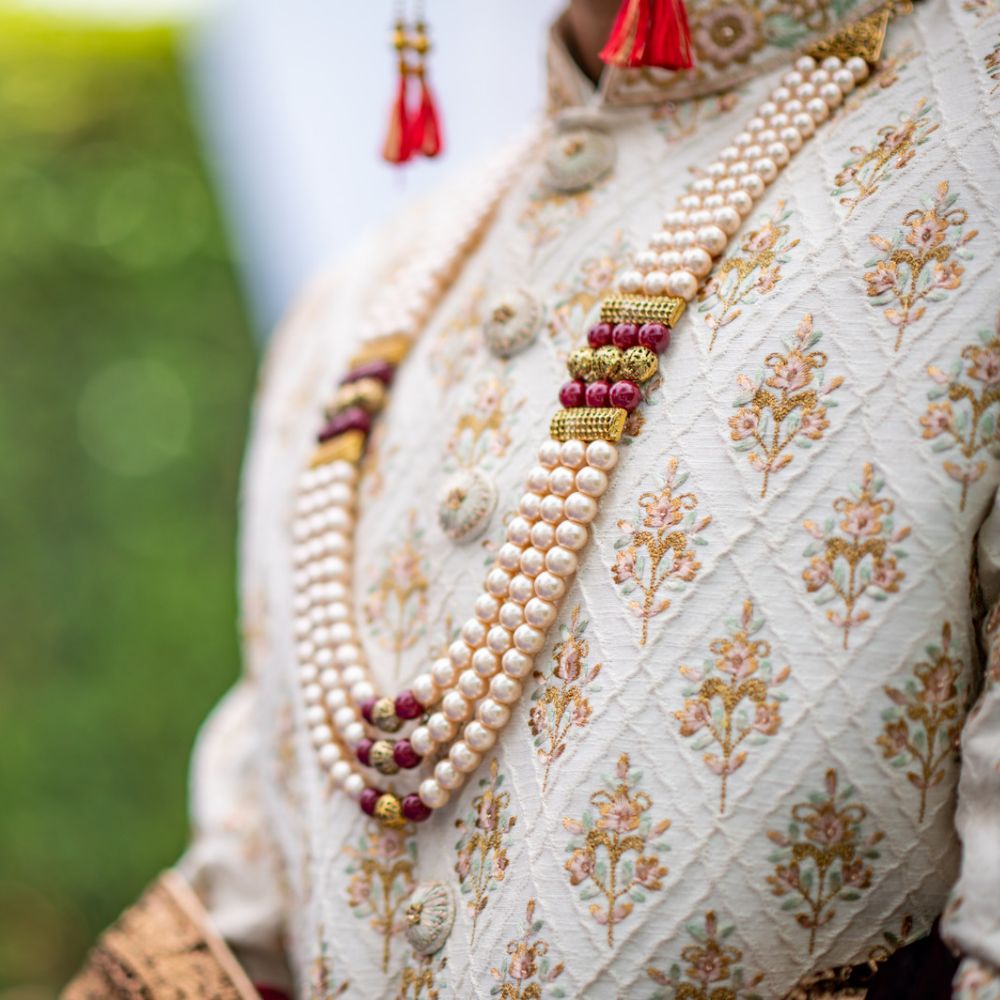All Articles & Guides / Cremation Jewelry / A History of Mourning and Remembrance Jewelry
A History of Mourning and Remembrance Jewelry
For as long as humans have been honoring their deceased loved ones, they have been making and wearing jewelry as a way to remember them. Remembrance jewelry, or cremation jewelry, as it’s often called today, can take the form of a simple ring or pendant with the deceased’s name and date of death on it, or be a more elaborate piece with precious stones that incorporates hair and even cremains. Mourning jewelry is still common today, although it often takes a form that fits more into current styles. Here we examine the history of mourning jewelry and its evolution through different eras to form the styles we use to commemorate loved ones today.
Remembrance Jewelry in Ancient Times
Remembrance memorial rings can be traced back to Ancient Rome. Archeologists have found a variety of jewelry from centuries ago that incorporates bones and teeth. It’s not clear if these items were made in remembrance of particular individuals, as a mark of status or rank, or perhaps even as a form of protection or to bring luck. Ancient Romans were known for their complex designs, colorful gems, and their craftiness with a wide range of materials.
Victorian Mourning Jewelry
Memorial jewelry is most associated with the Victorian Era, specifically after the death of Prince Albert, Queen Victoria’s husband, in 1861. Queen Victoria wore mourning black for decades after his death and set the trend for the rest of the country. Black jewelry of all types became fashionable, and memorial jewelry in particular became very common – in part due to the shift toward mass production and less expensive materials. Black Victorian mourning jewelry is now a sought-after antique item that some people collect or personally enjoy.
It’s during this period that bereavement jewelry expanded beyond rings to include items like lockets, bracelets, necklaces, and cameos. More expensive items were often made of jet (a form of fossilized coal), pearls, ivory, and jewels. More affordable alternatives included black enamel or glass.

Hair Memorial Jewelry
While hair was used to create memorial jewelry since at least the mid-17th century, it also gained popularity among a wide range of people during Victorian times. Hair memorial jewelry was created by craftsmen who also worked as wigmakers or hair artists and could be quite expensive. Many women started making their own mourning jewelry with hair, and various patterns, books, and “starter kits” were available. Hair could be woven into rings, pins, bracelets, and other items.
Over time hair memorial jewelry has gained popularity, especially amongst pet owners. Today there are many lockets, bracelets, and even keychains that are formed from your pet’s or even loved one’s hair.
Remembrance Memorial Rings
Mourning rings often bear a name, death date, and a symbol or word that is meaningful to the person being commemorated. Traditionally, the stones mounted on remembrance memorial rings were black and black materials were typically used to form the ring. The use of memorial rings dates back to at least the 14th century, and they really gained popularity in the mid 18th century during the era of black-themed Victorian mourning jewelry.
Mourning jewelry had fallen out of style by the early 20th century, although remembrance memorial rings made a brief comeback in the 1930s and ’40s. Part of the reason behind this may be that the mortality rate had declined considerably from earlier eras.
Modern Mourning Jewelry
Although mourning jewelry isn’t the fashion trend that it once was, there are far more options – and more affordable options –now than ever before. Today, you can find a wide variety of rings, bracelets, necklaces, lockets, and other remembrance jewelry items, many of which can be engraved. In addition, modern manufacturing techniques allow for fingerprints and photographs to be engraved directly onto jewelry, creating a unique memorial item.
What Materials is Mourning Jewelry Made From?
Sterling Silver Mourning Jewelry
The most common and popular material used today in cremation jewelry is 925 sterling silver. 925 sterling silver means that 92.5% of the cremation jewelry consists of pure sterling silver, and the other 7.5% consists of other metals such as copper. This is generally done because pure sterling silver is too soft for use as jewelry. Adding additional materials helps keep the jewelry strong. It is important to properly care for your sterling silver cremation jewelry by frequently cleaning, which helps remove impurities and other materials that can cause tarnishing and corrosion.
Gold Remembrance Jewelry
Gold cremation jewelry is a popular selection that stems from traditional Victorian mourning jewelry. Gold is often chosen for its value and resistance to corrosion. 14k gold comes in two different styles: yellow gold and white gold. Yellow gold is simply gold in a natural state. A more modern option is white gold which is created by using a mixture of pure gold and other white metals. Typically, white gold is plated with rhodium to enhance the whiteness and harden the pendant for better durability.
Gold Vermeil Cremation Jewelry
Gold vermeil is a combination of sterling silver and 14k gold. Each gold vermeil pendant is carefully coated with pure 14k gold. This offers an almost indistinguishable look from 14k gold at a fraction of the cost.
Pewter Cremation Jewelry
Pewter cremation jewelry is often chosen for its affordability. Blue cobalt cremation jewelry with pewter designs is one of the most popular pieces of cremation jewelry today. These jewelry pieces are made with a pewter top and a blue cobalt cylinder attached. These pieces are ideal for use as jewelry or to use as a keepsake in a special place.
Wood Cremation Jewelry
Wood cremation jewelry has a long history with roots tying back to ancient times, but it has also recently become extremely popular. These uniquely crafted jewelry pieces are often priced very affordably and are typically crafted from exotic tropical woods. Wood jewelry can be formed with the option of having a viewing portal, making the cremains or other contents within the jewelry visible.
Glass Cremation Jewelry
Glass cremation jewelry is a newer concept that evolved as our ability to blow glass developed. Each piece is carefully blown into the desired shape, making every pendant unique. A technique is commonly used called lampworking, where a glass rod is formed by melting the glass. Molten glass is then formed by around a metal mandrel by spinning it with your fingertips. Various other techniques are then used to achieve the desired shape, color and designs, ultimately creating a unique and irreplaceable piece of mourning jewelry.
Titanium Cremation Jewelry
Titanium is one of the most unique precious metals today used in cremation jewelry. Titanium is known for its characteristics of being extremely light, strong, and corrosion-resistant. Titanium is approximately 45% lighter than steel while offering a much better finish and longevity. It is often the most popular choice for men’s cremation jewelry although women have also come to appreciate its unique qualities and ease of maintenance. Titanium cremation jewelry is available in necklaces or bracelets where a cylinder is used to hold contents like cremains, ashes, dried flowers, or earth from a special location.
Rhodium Cremation Jewelry
Rhodium is commonly used in cremation jewelry for various purposes. Some jewelry is coated with rhodium to help protect and extend the life of the jewelry. Rhodium is also used in picture memory pendants because of its hardness. Using rhodium in a picture engraving process helps ensure the photo of your loved one will not fade. Today, rhodium is one of the most expensive precious metals available in its pure form.
Common Meaningful Symbols Used in Mourning Jewelry
Although mourning jewelry has evolved in form and materials, the symbols that are used remain rooted in tradition. Here are some of the most common symbols used to commemorate loved ones.
- Heart – Love
- Circle – Eternity and unity
- Angel – Protection, devotion, and faith
- Sun and Moon – Duality. In the Western tradition, the Moon symbolizes femininity, while the Sun is masculine
- Tree – The tree of life and the interconnectedness of living things
- Butterfly – Change and rebirth
- Bee – Hard work and cooperation
- Dragonfly – Renewal and change
- Dolphin – Freedom, balance, and charity
- Elephant – Strength, patience, and wisdom
- Fish – Perseverance in adversity
- Fleur de Lys – Purity
- Ankh – Eternal life
- Scarab – Resurrection
- Anchor – Hope
- Celtic Knot – The interconnectedness of all things; different types of knots often have slightly different meanings
Mourning jewelry can be a beautiful and thoughtful way to commemorate the life of a loved one and adding a symbol stemming from ancient times can represent the longevity of your relationship and feelings. With the rise in the cremation rate in the United States in the past 20 years, there has been a growing demand for cremation jewelry. Many people find mourning jewelry is a wonderful way to honor a loved one who has passed or a way to deal with grief by keeping them close.
Related Content





